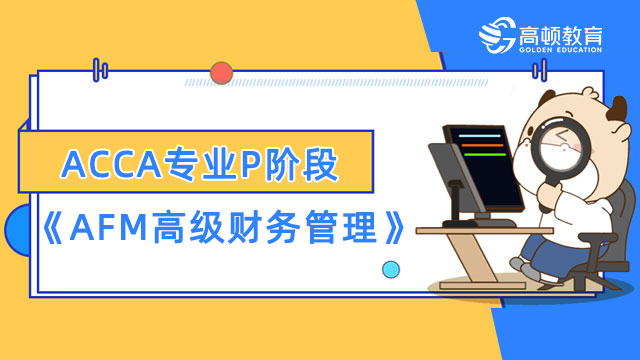2012年12月ACCA考试P4考试考官报告
来源:
高顿网校
2013-06-27
每次考试结束ACCA考官都会根据本次考试考生的总体表现情况写报告,具体分析学生在答题过程中出现的问题,总结学生在备考该科目时应该注意的事项,以下是2012年12月P4考官报告:
General Comments
The structure of the paper was similar to past papers with two compulsory questions in section A, consisting of 60 marks in total, and three 20-mark questions in section B, of which candidates had to do two, for the remaining 40 marks. The overall performance of the candidates was satisfactory but the pass rate was a little lower than the previous sitting. In section A, question one consisted of 33 marks and question two consisted of 27 marks. Four professional marks were allocated to question two. Both questions required candidates to undertake computations and discussion. In section B, question five was wholly discursive, while questions three and four consisted of a mixture of computational and discursive elements. Excellent answers were obtained from candidates who applied their knowledge to the scenario given in each of the questions. The presentation of such answers was good, with clear labelling and structure and workings. Successful candidates attempted all the parts of the questions and managed their time well between questions. Like the previous sittings, there was evidence in this sitting of some candidates employing poor time management techniques and not answering all the parts of a question. In a small number of cases some candidates did not answer a question at all. There was evidence that some candidates spent too long on one or some questions, then had to rush through the other questions. A number of such candidates failed marginally, even though the questions they had answered fully were of a pass standard, because they did not attempt all the questions. It is important to make a reasonable attempt at each question and each part of each question and good time management is essential. This can be done through candidates practicing past exam questions under timed, examination conditions. It was also evident that well-structured answers enabled candidates to manage their time more effectively. For example, questions one and three had parts which were long and complex, and good time management supported by clear presentation and structure to the answers resulted in high marks being achieved. Some candidates were poorly prepared for the exam in terms of their knowledge, understanding and application. This was especially evident in questions 1(b), 2(ii), 2(iii), 2(iv), 3(a), 3(b), 4(a) and 4(b). Candidates should be aware that they must have a good understanding and knowledge of the entire P4 syllabus. Candidates need to know the syllabus well in order to apply knowledge to the question scenario. A consistent, sustained study approach, supported by question practice and reading around the subject is much more likely to achieve success. It is highly unlikely that a strategy based on a last-minute intense study approach and attempting to questionspot will be successful. This has been proven to be case in every P4 examination so far. Poor performance was also evident where candidates did not read the content and requirements of the questions fully. Equally answers need to be directed at the scenario in the question, general answers do not gain many marks.
In summary, a number of common issues arose in candidate’s answers: A lack of knowledge and understanding of the entire syllabus. This can be put right for future examinations through a strategy of sustained study, instead of last minute intensive preparation and trying to spot questions and/or topic areas. A good knowledge of current issues is also essential; Failing to read the question requirement carefully and therefore providing irrelevant answers which score few, if any, marks. Question requirements and the information in the scenario need to be read with care; Poor time management between questions, some candidates spent far too long on some questions and this put them under time pressure to finish the remaining questions. Good time management between questions and in parts of questions is essential; Not learning lessons from earlier examiner’s reports and thus making the same mistakes. Many of the same comments are made repeatedly in the examiner reports; Illegible handwriting and poor layout of answers. It is very important to plan and structure answers properly. Good, clear handwriting is essential. Adopting these good practices will also enable candidates to get the majority of the professional marks available.
Specific Comments
Question One
Question one required candidates to calculate and comment on how the cost of capital of a company changes when it sells part of the business, to comment on the results and to explain any assumptions made (part (a)); discuss whether the market value of equity would remain unchanged after a part of the business is sold (part (b)); and to explain what a demerger was, and the possible benefits and drawbacks of a demerger as opposed to selling part of the company (part (c)). Overall this question was done adequately. Many candidates made good attempts at all the parts and, apart from part (b), gained reasonable marks. The presentation of the answers was varied, with some answers being presented well, but in others the information was in different places and not structured in a clear manner. In long questions, good presentation provides clarity of thought and indicates to the examiner that the candidate understands the topic area well. Part (a) was generally done adequately. Most of the candidates calculated the initial cost of equity correctly, although a small minority confused the market risk premium with return on the market. Most candidates calculated the initial cost of debt correctly, but a few tried to estimate it using NPV and IRR which was not correct. Although many candidates estimated the market values of equity and debt correctly, a significant number assumed that the book value of debt was the market value of debt, and that free cash flows were the market value of equity. Most candidates were aware that they needed to estimate a revised beta, once a part of the company was sold. However, a significant number found it difficult to un-gear the beta, find the asset beta for the hotel services only and thereby estimate an equity beta and cost of equity. Many candidates were unclear about the approach to be taken. A sizeable minority of candidates did not comment on the results, nor explain the assumptions made in part (a). Since about 25% of the marks were allocated for these, candidates who did not comment or explain, were not gaining the maximum marks that were available.
Although the majority of candidates attempted part (b), answers tended to focus on one to two points which were repeated. This resulted in limited depth and/or range of the answers provided and therefore few candidates gained more than half marks. Many good answers were provided for part (c) and it was pleasing to see that many candidates could apply their knowledge and understanding of demergers, and the benefit and drawbacks of demergers. However, a sizable minority of candidates were of the opinion that once a company was demerged, it would remain part of the same group, which is not the case.
Question Two
Question two was focussed on transactions, translation and economic exposure related to foreign currency risk and its management. Part (i) asked candidates to explain the type of exposure the company faced in each situation. Part (ii) required candidates to apply two over-the-counter (OTC) derivative products to manage transactions exposure. Part (iii) required candidates to assess the translation gain/loss due to the devaluation of a currency. Part (iv) required candidates to discuss how economic exposure, that the company faced, could be managed. Overall, this question was done less well compared to question one. This question contained four professional marks available for well-structured answers presented in a report format. The presentation of the answers was varied, with some answers given in report style, but many candidates answering the question without paying due attention to what a report should contain. Answers which gave a report title but then did not structure the answer appropriately gained few professional marks. The same point has been made in all examiner reports, good presentation and structure is essential to gain a good pass, and professional marks are relatively easy to gain.
Part (i) was done well, with the majority of candidates able to explain the exposure the company faced in each case. Credit was given for explanation of the exposure faced even if it was not named. However, just stating the name of the exposure with no explanation gained few marks. Part (ii) was done adequately but many candidates were not able to estimate the four-month forward rate correctly (many estimated the annual forward rate). Also, in the case of OTC options, many answers did not calculate the opportunity cost of the premium. Most candidates attempted to make reasonable recommendations and offer alternative hedging strategies. However, like part (b) in question one, the range and depth of the advice was limited. Part (iii) was generally done very poorly. Common mistakes were not converting the currency into Euros, not getting the exposed percentages correct and not comparing the amounts before and after the devaluation in order to estimate the translation loss. Relatively few responses were able to discuss whether and how translation exposure should be managed. It seems that whereas many candidates knew what translation exposure was, few were able to apply measurement techniques to assess this in the question scenario. Part (iv) some reasonable responses were obtained for this part, but again there was a lack of discursive depth to this part.
Question Three
Part (a) of question three required candidates to calculate the percentage gain on a target company’s share price using three different acquisition methods and to comment on the results. With the cash offer, a significant number of candidates failed to calculate the earnings per share of the acquiring or target companies correctly. With the share-for-share offer many responses did not account for the synergies created. The majority of candidates were not able to calculate the value of the bond offer. A small minority of the candidates did not give the gains as percentages, but as amounts, although percentages were specifically asked for. It was surprising that many candidates failed to get many marks for this question especially when a similar question had been set in a recent P4 examination. It could be that candidates did not expect the same topic to be examined again so soon and decided not to study this area. Candidates should bear in mind that any topic area from the entire P4 syllabus can be tested in an examination. Recent examination of a topic area does not preclude it from being tested again soon after. Some reasonable responses were given in part (b) of question 3 but a sizeable number of candidates thought that minority share holders could never be forced to sell their shares, and fewer but significant minority of candidates thought that offering a higher price to some shareholders was acceptable. Both of these assertions are incorrect within the EU Takeovers Directive. A significant minority of responses did not attempt to produce answers for either or both proposals and thereby failed to gain any marks for part (b). When selecting a question, candidates should ensure that they answer all parts of a question adequately in order to achieve a comfortable pass.
Question Four
Part (a) of question four required candidates to calculate the net present value (NPV) of a project and the sensitivity of the selling price. A sizeable number of candidates made basic errors in the NPV calculation with respect to timing of flows and not being able to calculate the present value of an annuity. Additionally many candidates were unable to calculate the sensitivity of the selling price. Both these areas are part of the F9 syllabus, as well as the P4 syllabus It was therefore surprising that few candidates got the majority of the marks available for this part. Part (b) required candidates to formulate a multi-period capital rationing model. Very few candidates were able to do this successfully. Many responses tried to calculate the acceptance of projects based on profitability index, which would be used for single-period capital rationing, rather than recognising that this was a multi-period capital rationing problem. There was also some evidence which suggested that candidates did not understand what the word ‘formulate’ meant, although it is used in the study guide. Part (c) required candidates to explain the output results from a linear programming solution. The majority of candidates provided good answers for this part and gained majority of the marks. Part (d) required candidates to explain the need to apply capital rationing and the features of a capital investment monitoring system. Many candidates provided good answers for this part and gained majority of the marks; although few responses distinguished between soft and hard capital rationing, and recognised that soft capital rationing may be as a result of hard capital rationing.
Question Five
Part (a) of the question asked candidates to explain the role and aims of the IMF, and the impact of IMF intervention, on the company. Generally this part was done well by the majority of candidates who chose this question. There was clear evidence that many candidates had read the article in the Student Accountant. The main weakness in responses to this part was that sometimes focus was put on either of the two requirements but a balanced narrative was not given. Overall, this part was answered well. Part (b) asked candidates to explain why the company, as a mid-price retailer, was affected more than companies operating at the high price-end and the low price-end. This part was again done well. Part (c) asked candidates to discuss the risks and how the reduction in quality control costs would impact the company. In the main, answers tended to focus on a few narrow points, rather than a broader range of possible risks and impact. As a result relatively few responses obtained more than half to two-thirds of the marks. Conclusion
Overall, reasonable attempts were made at questions one and five, but questions two, three and four were done less well. Attempts to pass by undertaking short intensive study and trying to spot questions and/or topic areas is unlikely to result in success. Good presentation and structure of responses; good application of time management; answering all parts of a question; and knowledge and understanding of the entire P4 syllabus and study guide, are the necessary requisites for success
高顿网校特别提醒:已经报名2013年ACCA考试的考生可按照复习计划有效进行!另外,高顿网校2013年ACCA考试辅导高清课程已经开通,通过针对性地讲解、训练、答疑、模考,对学习过程进行全程跟踪、分析、指导,可以帮助考生全面提升备考效果。
报考指南: 2013年ACCA考试报考指南
考前冲刺:ACCA考试试题 考试辅导
高清网课:ACCA考试网络课程
版权声明:本条内容自发布之日起,有效期为一个月。凡本网站注明“来源高顿教育”或“来源高顿网校”或“来源高顿”的所有作品,均为本网站合法拥有版权的作品,未经本网站授权,任何媒体、网站、个人不得转载、链接、转帖或以其他方式使用。
经本网站合法授权的,应在授权范围内使用,且使用时必须注明“来源高顿教育”或“来源高顿网校”或“来源高顿”,并不得对作品中出现的“高顿”字样进行删减、替换等。违反上述声明者,本网站将依法追究其法律责任。
本网站的部分资料转载自互联网,均尽力标明作者和出处。本网站转载的目的在于传递更多信息,并不意味着赞同其观点或证实其描述,本网站不对其真实性负责。
如您认为本网站刊载作品涉及版权等问题,请与本网站联系(邮箱fawu@gaodun.com,电话:021-31587497),本网站核实确认后会尽快予以处理。
点一下领资料
【整理版】ACCA各科目历年真题
真题高频考点,刷题全靠这份资料
下载合集
acca全科学习思维导图
梳理核心考点,一图看懂全部章节
下载合集
2023年acca考纲解析
覆盖科目重难点,备考按照计划走
下载合集
acca备考 热门问题解答
- acca考试怎么搭配科目?
-
建议优先选择相关联的科目进行搭配报考,这样可以提高备考效率,减轻备考压力,1、F1-F4:为随时机考科目,难度较低,这里可以自行随意选择考试顺序。2、F5-F9:如果你的工作的和财务会计或者审计有关、或者你比较擅长财务和审计的话,推荐先考F7和F8。你可以选择一起考ACCA考试科目F7和F8或者先考F7(8)再考F8(7),这就要取决你一次想考几门。3、P阶段:选修科目中,建议企业首选AFM!第二部分科目进行选择,如果AA和SBR掌握学生更好,可以通过选择AAA,如果SBL掌握的好,可以自己选择APM。
- acca一共几门几年考完?
-
acca一共有15门考试科目,其中有必修科目和选修科目,考生需要考完13门科目才能拿下证书。
- acca一年考几次?
-
acca一年有4次考试,分别是3月、6月、9月和12月,分季机考科目是采取的这类四个考季的模式,而随时机考则是没有这方面的时间规定限制,可以随报随考。
- acca的含金量如何?
-
ACCA证书的含金量是比较高的,从就业、能力提升、全球认可等角度来说,都是比较有优势的证书,其含金量主要表现在以下几个方面:1、国际化,认可度高;2、岗位多,就业前景好;3、缺口大,人才激励。
严选名师 全流程服务
其他人还搜了
热门推荐
-
acca专业阶段考试科目有哪些?究竟都考些什么? 2023-04-23
-
accaP阶段科目考完需要多久?速戳了解! 2023-03-28
-
ACCA高级课程是哪几门?和基础课程比难度怎么样? 2023-03-17
-
sbr和sbl哪个难?accaP阶段先考哪个? 2023-03-16
-
accaP阶段报名费是多少?一文介绍全了! 2023-03-14
-
accaP阶段有哪些科目?各科目详细介绍! 2023-03-14
-
accap阶段考试顺序是怎样的?选修科目怎么选? 2023-03-10
-
acca考试科目:《ATX高级税务》重点详解! 2023-03-06
-
acca考试科目:《APM高级业绩管理》重点详解! 2023-03-06
-
acca考试科目:《AFM高级财务管理》重点详解! 2023-03-06
-
accap阶段有效期是多久?需要几年内考完? 2023-03-01
-
accaP阶段选修选哪两门?各科难度对比来了! 2023-02-28
-
2023年acca的sbl怎么学?点击查收备考攻略! 2023-02-24
-
acca考试p阶段科目题型,附各科分值参考! 2023-02-23
-
accap阶段要考几门?重难点是什么? 2023-02-10
-
accap阶段要考几门?重难点是什么? 2023-02-10
-
accaP阶段科目怎么搭配?先考哪门? 2023-02-09
-
ACCA专业P阶段:《AFM高级财务管理》复习攻略 2023-01-30
-
accap阶段选哪两门?考试重难点介绍! 2023-01-17
-
acca考试科目:《AAA高级审计与鉴证》题型及重点! 2023-01-17
-
acca专业阶段考试难度分析,选修科目报考指南来了! 2023-01-12
-
accap阶段报考顺序推荐,先报哪个好? 2022-12-15
-
ACCAp阶段一次最多考几门?成绩有效期是多久? 2022-08-24
-
ACCA的p阶段需要备考多久才够?考试难度怎么样? 2022-08-18
-
ACCAp阶段考试需要考几门?考试时间是哪天? 2022-08-15
-
ACCA考试P阶段考几门?P阶段成绩有效期是多久? 2022-08-12
-
ACCAP阶段科目难度高吗?P阶段是机考吗? 2022-08-10
-
ACCA最后四门难考吗?通过率怎么样? 2022-07-19
-
ACCA英语不好怎么办?怎么提高英语? 2022-07-14
-
ACCA机考报名时间是什么时候?怎么报考? 2022-07-14
 更多服务
更多服务








































